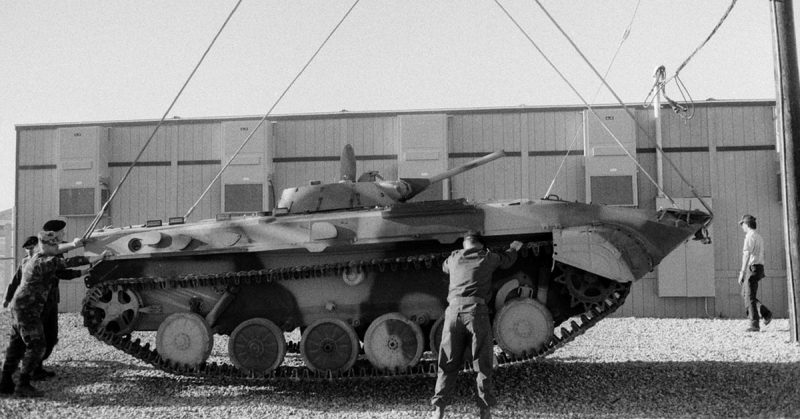The Soviet Union and its Warsaw Pact allies used a wide range of vehicles for reconnaissance during the Cold War. Main battle tanks and infantry fighting vehicles had their place in reconnaissance units, but there were also several specialist vehicles, designed as the perfect tools for recon.
BRDM-1
The BRDM-1 entered Soviet service in 1957. An odd-looking vehicle, it had eight wheels in two different sizes. The front and back pairs were in use at all times and provided the vehicle with its four-wheel-drive power.
Four small wheels were set between them and remained raised while driving on roads or over flat terrain. They were lowered onto the ground for crossing ditches and difficult terrain, where they improved the vehicle’s off-road performance.
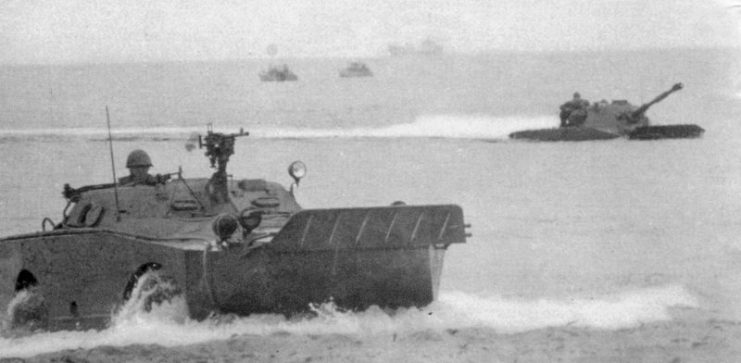
Like many Soviet combat vehicles, the BRDM-1 was amphibious, able to propel itself across rivers using a jet of water.
It had a welded steel hull, initially with an open-topped roof. A complete roof was added to the chassis in 1958. A machine gun was mounted on the roof and there were four firing ports for the troops inside to shoot out.
The original model had the equipment to detect chemical and nuclear weapons but not to protect its crew from them. The later BRDM-1-RKhb version added nuclear, biological, and chemical (NBC) protection, as well as alarms to warn nearby troops about contaminants.
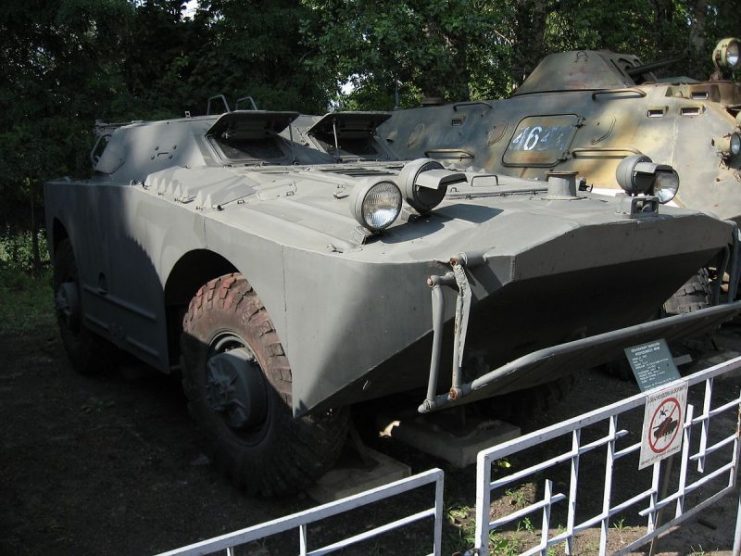
BDRM-2
The BRDM-1 was successful enough to justify building similar vehicles. During the 1960s, the new BRDM-2 was designed, based on the original. It retained the welded steel armor and access hatches, as well as places for the driver and commander at the front. But it also incorporated some significant changes that made it more adaptable and heavier hitting.
One of these changes was a more powerful engine. This was moved from its previous place at the front of the vehicle to the back.
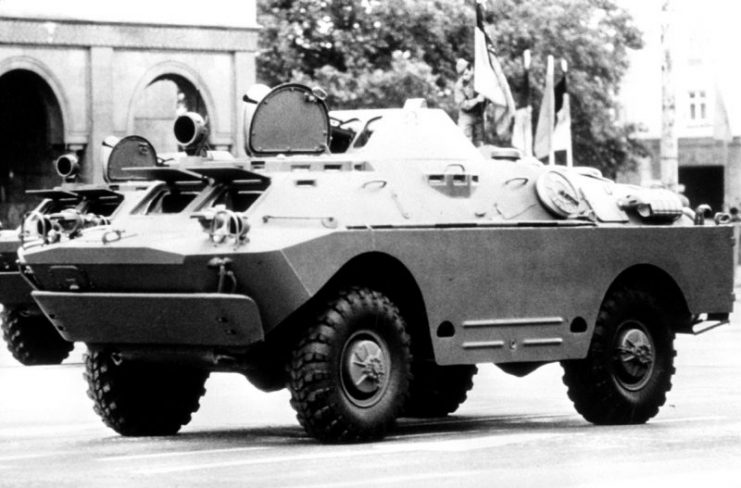
More obvious to outside observers was the addition of a one-man manually operated turret. This carried a 4.5mm KPVT machine gun, heavier than the weapons on the BRDM-1, with a telescopic sight, and a co-axial 7.62mm PKT machine gun.
The BRDRM-2 retained its predecessor’s unusual arrangement of wheels, with a new tire pressure regulation system for better off-road driving. It also had a water jet for amphibious operations.
As well as NBC sensors and protection, this vehicle was equipped with infra-red headlights and searchlight and a winch.
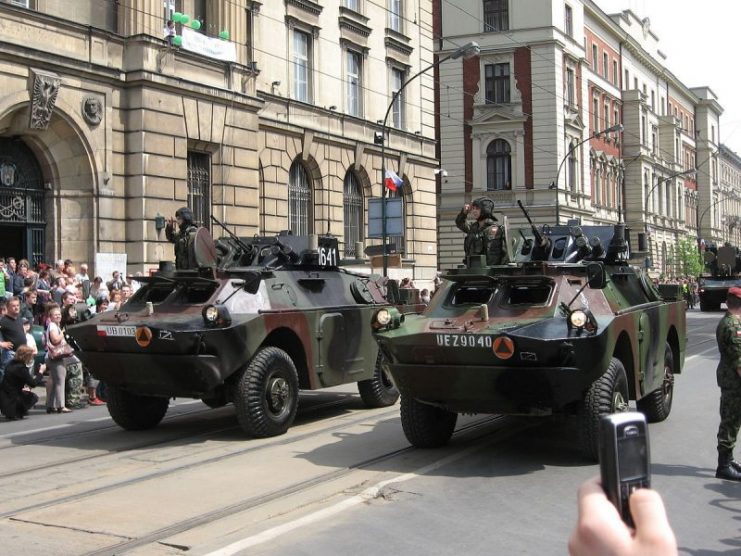
BRM
For their next reconnaissance vehicle, Soviet designers moved away from the BRDM design. Instead, they adapted the body of the BMP-1, an infantry fighting vehicle. This innovative design had been created in the late 1960s before entering general service in 1970. The reconnaissance-oriented BRM followed in 1972.
The BRM lost two of the four roof hatches that troops used to get in and out of the BMP-1. The extra space was used for a larger two-man turret. This was fitted with a 73mm 2A28 smoothbore gun and a 7.62mm PKT machine gun. A bank of smoke grenade launchers was sometimes mounted on the back of the turret.
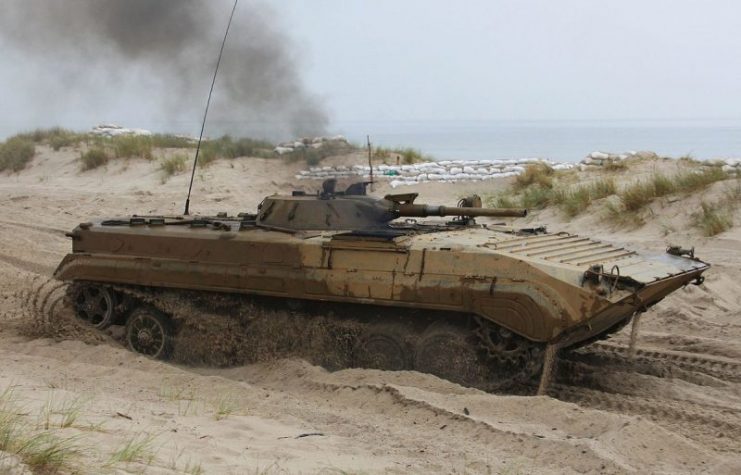
Also in the turret was a Tall Mike ground surveillance radar system, which could be elevated above the roof to provide better coverage. Together with a laser rangefinder, this gave the BRM’s crew more tools for their reconnaissance work. Improved navigation equipment and radio allowed it to coordinate more effectively with other troops.
The BRM had six crew, two more than the BRDM-2. In the front were the driver and a navigator. The gunner was joined in his turret by the commander. In the rear were a pair of observers.
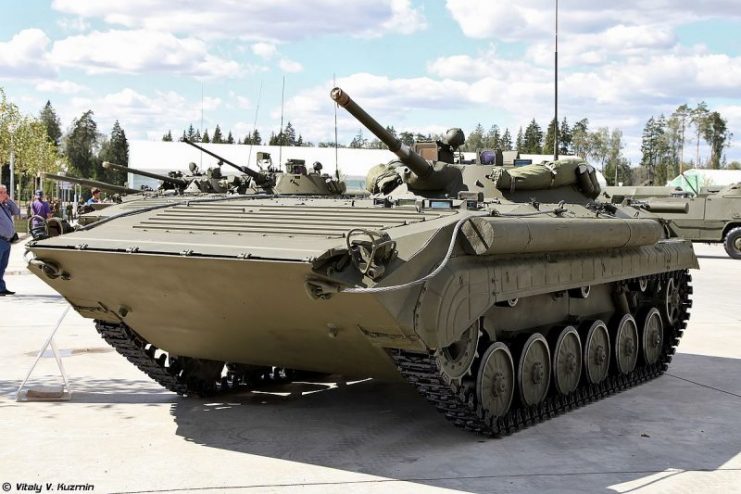
BRM-23
Like the Russians, the Bulgarians adapted one of their infantry fighting vehicles to provide a specialist tool for reconnaissance troops.
Based on the BMP-23, the BRM-23 bore many similarities to Soviet recon vehicles. The driver and an infantryman sat in the front, with the engine between them. Behind them was a powered turret containing the commander and the gunner. A fifth trooper sat in the rear.
The BMP-23’s main weapon was a 23mm cannon previously used in an anti-aircraft gun. A coaxial 7.62mm PKT machine gun joined this on the turret. There were two firing ports for small arms fire to the right of the main body and one on the left.
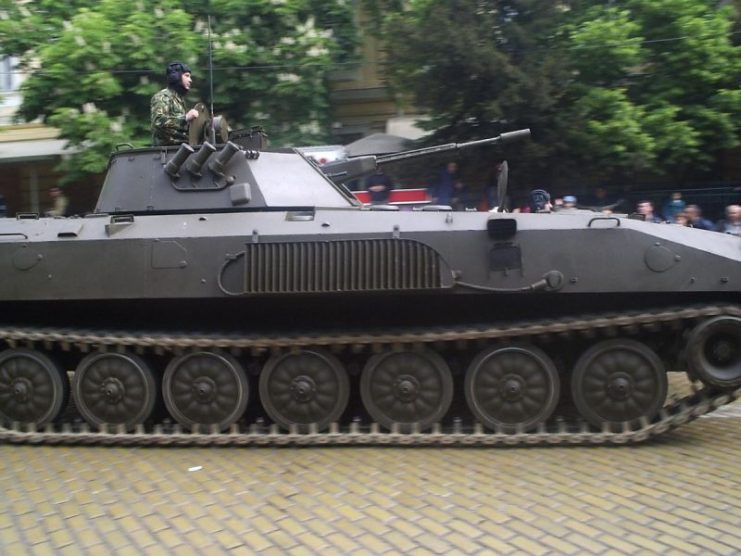
The vehicle carried a wide range of specialist reconnaissance equipment. A passive night-vision device and a laser rangefinder could each be used either handheld or on a stabilizing tripod. There were detectors for chemical weapons, radiation, and mines. An artillery aiming circle could be used to help direct other troops’ fire.
Designed to operate over 60 miles in advance of the rest of the army, the BRM-23 had to be able to stay in contact. Do do this, it carried extra radios and an aerial that, when raised, could extend the main radio’s range to 75 miles.
Like the later Soviet reconnaissance vehicles, the BRM-23 had NBC protection. It could go amphibious, using its tracks rather than water jets for propulsion.
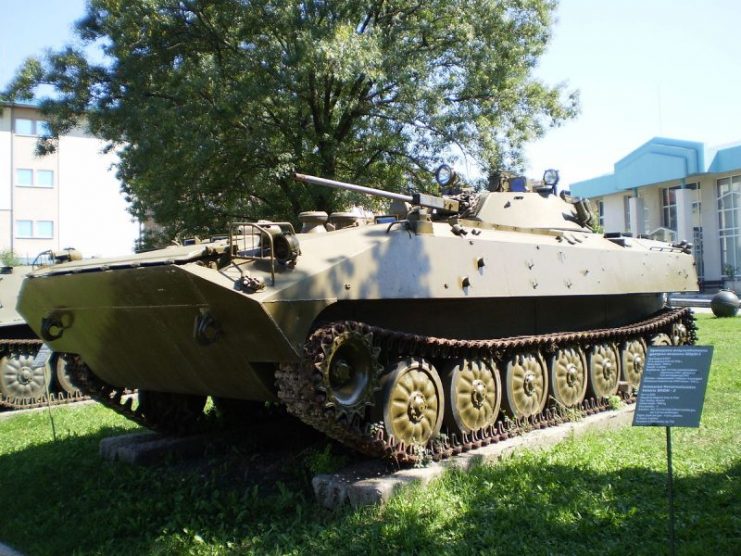
FÚG
The FÚG was Hungary’s contribution to the world of Cold War reconnaissance vehicles. It was adopted by the Hungarian army in 1964 and later taken up by the Czechs and Poles.
The FÚG looked a lot like the BRDM-1. It shared the Soviet vehicle’s welded steel armor and unusual wheel layout, with four smaller retracting wheels between the main four. Unlike the BRDM-1, its engine was at the rear. Instead of a single jet for moving through water, the FÚG had two.
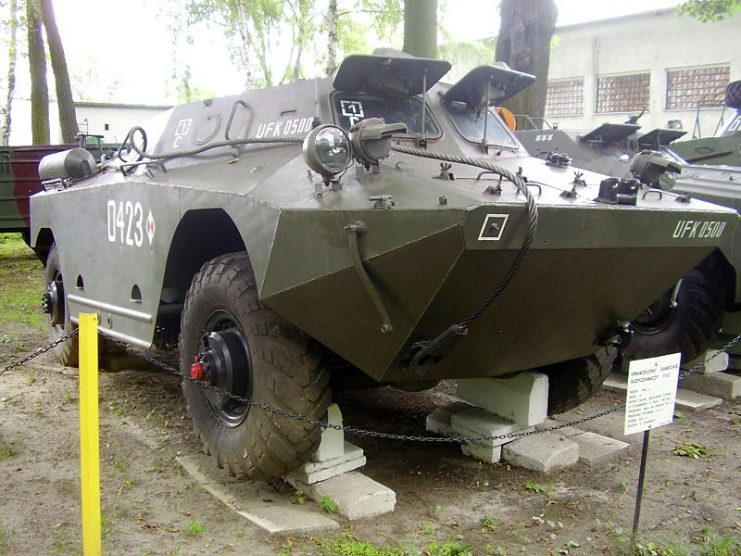
The FÚG was entered through roof hatches which could be fixed in their raised position to protect soldiers firing and climbing out. It had six firing ports for small arms but only one weapon of its own, a pintle-mounted 7.62mm SGMB machine gun, which could be fired by a trooper standing in an open hatch.
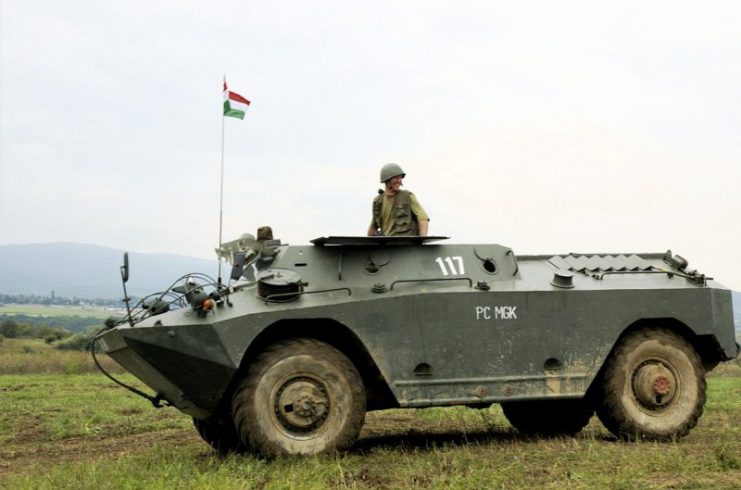
The vehicle had infrared driving lights and sometimes a matching searchlight. The original model lacked NBC protection, though this was added to the later FÚG-US.
